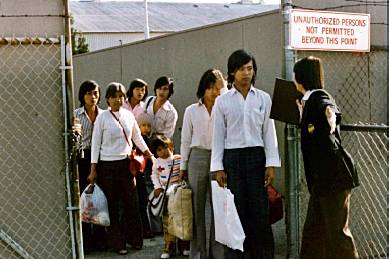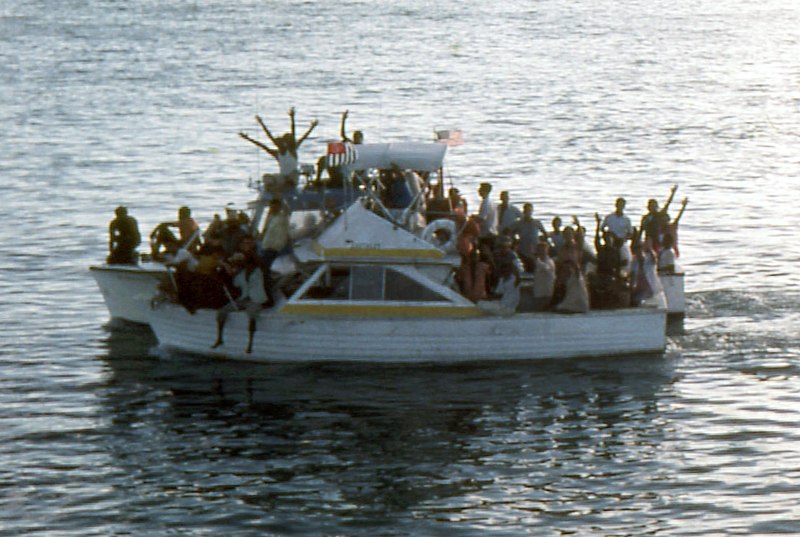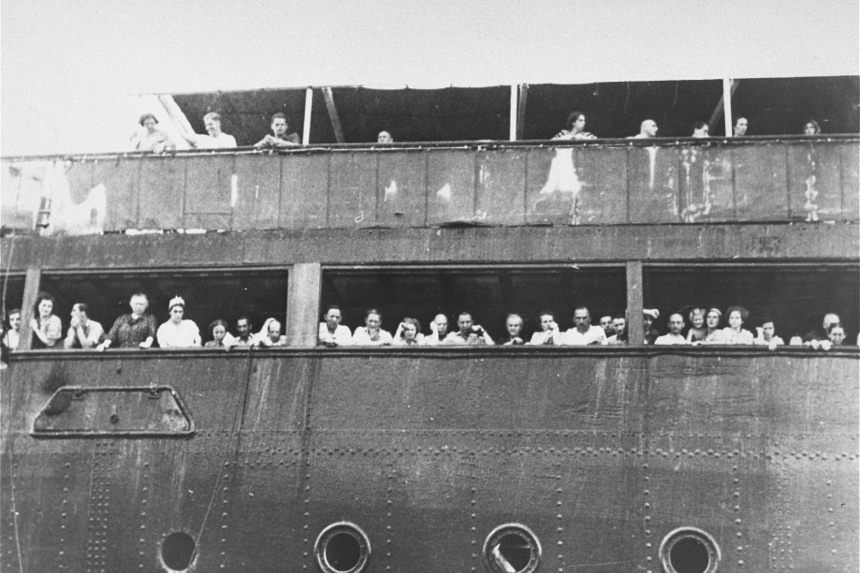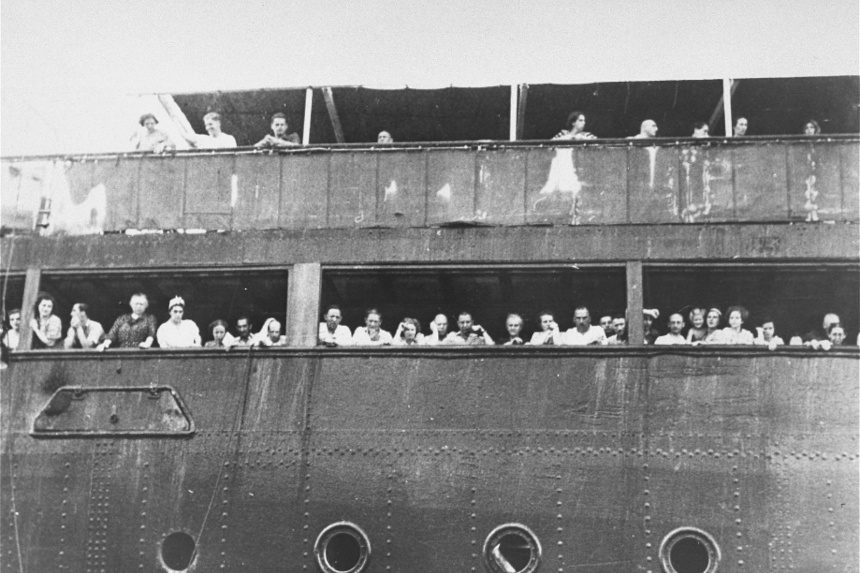This series by American studies professor Ben Railton explores the connections between America’s past and present.
The past week has seen two prominent stories involving international refugees coming to the United States. Republican Congressman Matt Rosendale vocally objected to a plan to relocate 75 Afghan refugees to his home state of Montana, accusing the Biden administration of “flooding our communities with unvetted refugees.” While the administration is moving forward with the plan for Afghan refugee resettlement, it has responded quite differently to an influx of Haitian refugees fleeing that nation’s multiple natural disasters: the Department of Homeland Security is working to expel all those refugees, and at the same time continuing with prior policies of deporting other Haitian migrants.
These two federal policies might seem contradictory, but in fact they are in keeping with a longstanding, frustrating American duality: our tendency to accept refugees from nations affected by or part of global conflicts in which the U.S. is directly involved, while turning away those for whom America’s self-interest is less clearly affected — but whose situations are no less dire or in need of our aid.
A close parallel to the current Afghan refugee resettlement was the U.S. acceptance of refugees at the end of the Vietnam War. Shortly after the fall of Saigon in April 1975, the Ford administration authorized the evacuation and resettlement in the U.S. of 140,000 South Vietnamese and Cambodian refugees. This policy was met with the same kinds of fears and prejudices being expressed today by Congressman Rosendale and others, but the resettlement continued and became the origin point for the ongoing development of a vibrant Vietnamese American community. Ultimately, more than three million such refugees fled Vietnam, Laos, and Cambodia in the decades following the war’s conclusion, and more than one million of them would end up in the United States.

Five years after the fall of Saigon, in April 1980, the United States was faced with another urgent refugee crisis, as some 125,000 Cubans gathered in that nation’s Mariel Harbor, given a singular chance by the Castro regime to flee the country. While the U.S. had in no way directly caused this refugee crisis, its relationship with Cuba and Castro had for decades been a central focus of broader Cold War conflicts with the Soviet Union and communist regimes around the world. It seems clear that such global concerns, along with genuine humanitarian goals to be sure, influenced the Carter administration’s decision to take part in the Mariel boatlift and welcome the Marielitos (as the refugees came to be known) to the United States, where many of them settled in Miami and South Florida.

Florida Keys–Public Libraries from Key West, Fla., USA via the Creative Commons Attribution 2.0 Generic license)
It is of course understandable that U.S. federal policies would be tied to national interests, and those practical factors behind these decisions did not in any way minimize the real and meaningful effects for the hundreds of thousands of refugees given the opportunity to come to the United States. The problem, instead, is that in those moments when American interests do not seem implicated, it becomes all too easy for the government to reject refugees, an attitude that can lead to truly tragic results for the world’s most devastated and desperate communities.
One of the most striking such rejections was of Jewish refugees from Nazi Germany and the Holocaust throughout World War II. Ironically enough, the most prominent moment involved a boat full of refugees within sight of Miami, just over four decades before the Mariel boatlift. In June 1939, the MS St Louis, a liner carrying more than 900 German Jewish refugees fleeing Hitler’s regime in the aftermath of the brutal November 1938 state organized pogrom known as Kristallnacht, reached the U.S. coast. The ship had originally been headed for Cuba, as many of the passengers had purchased Cuban visas in Germany; but Cuban officials refused to even let them disembark, much less honor those visas, and so the vessel made its way north to the United States.

The U.S. government was officially neutral in the unfolding conflict between Nazi Germany and its European neighbors (as it would remain for two more years), and so could easily have welcomed these refugees, likely with no diplomatic issues. But the Roosevelt administration took precisely the opposite approach, not only refusing to allow any of the passengers to formally enter the United States, but also ordering the Coast Guard to follow the St Louis to ensure that none of them attempted to jump overboard. After Canada likewise denied the refugees entrance, the ship eventually returned to Europe. Just over 200 of the 900 passengers were taken in by France, and the rest were forced to return to Germany where they were placed in concentration camps and where far too many of them died in the unfolding genocide that came to be known as the Holocaust.
“Send these, the homeless, tempest-tossed to me,/I lift my lamp beside the golden door!” So speaks the “Mother of Exiles,” the Statue of Liberty, as given voice by Jewish American poet Emma Lazarus in her poem “The New Colossus” so famously engraved on that statue’s pedestal. It’s true that some of those exiles, those homeless and tempest-tossed refugees, are more directly the result of U.S. policies or histories than others. But they are all equally “yearning to breathe free,” all facing desperate circumstances that can all too easily end in the worst human tragedies, and the golden door should be as open and welcoming to them all. May we remember that for the thousands of Haitian refugees in Texas today, and for every global refugee community as well.
Featured image: Jewish refugees aboard the MS St. Louis (United States Holocaust Memorial Museum, courtesy of National Archives and Records Administration, College Park)
Become a Saturday Evening Post member and enjoy unlimited access. Subscribe now




Comments
We already have more than enough non-english speaking people here, the majority of which will never learn due to their misguided loyalty to their homeland from which they risked their lives to escape from or are really anti-American to begin with. What we really need is a proclamation declaring a moratorium of 5 or 10 years for no immigration for anyone for any reason. It is time for the rest of the world to take up this challenge.
If they don’t like America when they get here the simple answer is for them to leave. Get their @$$e$ outta here. We didn’t ask them to come in the first place, especially in the Southern and Rural Areas of the US. Those illegally crossing our Southern border caught need two choices: 1. Return from where they came. 2. Hop on a ship and be sent to Greenland, Antarctica, or somewhere else where they can eek out their own existence. NO GOVERNMENT HANDOUTS OR SUBSIDIES. We’d be better off as a nation.
America is not welcoming to many whom our culture has deemed unacceptable. Our history stands as a permanent record of our racism. The multitude south of our border are part of the people against whom we practiced genocide. Those we did not kill, we placed in concentration camps called “reservations.” Although born within out borders, they were not citizens of our nation. An act of Congress was required to grant them citizenship.
Those we turned away in the 1930s and 1940s had been labeled “Christ killers” from the pulpits of many churches. Haitians are members of a race we one held as slaves. Much of America’s dark past is not covered in the history classes taught in our schools.